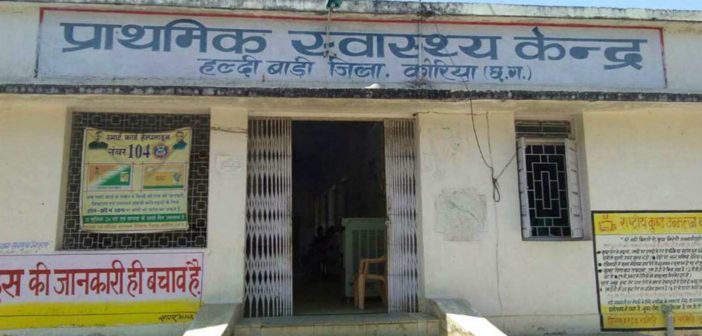The RBI recently released the ‘Handbook of Statistics on Indian States’ which among other things provides data on public health expenditure of various states and numbers related to the health workforce. Data reveals that the vacancies of doctors in PHCs was more than 20% as of 2023 while the vacancies of specialist doctors in other government facilities was more than 65%.
Target 3.c under goal number 3 (Ensure healthy lives and promote well-being for all at all ages) of the Sustainable Development Goals (SDGs) requires the member nations to ‘Substantially increase health financing and the recruitment, development, training and retention of the health workforce in developing countries.’ This target is to be achieved by the year 2030.
In this story, we look at the trends in India’s public health expenditure and numbers related to the health workforce, with the data sourced from the Reserve Bank of India’s “Handbook of Statistics on Indian States”, Parliamentary Questions and Answers, and other sources.
India’s Public Health Spending is around 2% of GDP, much below the average of OECD countries
In a parliamentary reply dated 6 December 2024, the Ministry of Health and Family Welfare (MoHFW) replied that in recent years, the Government Health Expenditure (GHE) has increased from 1.35% of Gross Domestic Product (GDP) in 2019-20 to 1.60% 2020-21, and 1.84% in 2021-22. The GHE is also forecasted to increase to 2.5% of GDP by 2025.
Further, the 2019 report of the Comptroller and Auditor General (CAG) on ‘Preparedness for the Implementation of Sustainable Development Goals’, provided data about the GHE to GDP from 2009-10 to 2017-18, which is as follows:
Despite the increase in GHE, data indicates that India’s share of GHE to GDP is much lower than the average (8%) GHE to GDP of the Organization for Economic Cooperation and Development (OECD) countries.
As per WHO’s World Health Statistics 2022, India’s GHE as a share of ‘General Government Expenditure’ in 2018-19 was lower than countries like Malaysia (8.5%), Russia (10.2%), Brazil (10.5%), and South Africa (15.3%), United Kingdom (19.7%), and the United States of America (22.4%).
Further, another 2021 WHO report notes that the average GHE to GDP among low- and middle-income countries, of which India is one, was 4.9% in 2019. Therefore, to date, GHE to GDP of India stands even below the average of low- and middle-income countries. To this effect, the 2019 CAG report notes that there is still a long way to go before the target of public health expenditure is achieved.
Between 2012-13 to 2019-20, states allocated an average of 5% budget for Health
The RBI’s handbook of statistics provides data on state-wise public expenditure on health from 2012-13 to 2019-20. The comparison of this data with total state budgets, combining revenue receipts and capital receipts of each year, shows that an average of about 5% of the budget was allocated to health.
In terms of the share of GHE to State budgets, the state of Meghalaya consistently stood in the top position each year during the period, except in 2013-14 where it held the second position. In the bottom three states, the state of Jammu and Kashmir featured five times, while Punjab and Bihar have featured four times.
Notably, as per the parliament reply dated 11 August 2023, the National Health Policy (NHP) required the states to increase their health spending to at least 8% of their budget. The analysis of state-wise data shows that from 2012-13 to 2019-20, only the state of Meghalaya achieved it for five years while Goa achieved it once in 2019-20. None of the other states have spent the recommended level of at least 8% of budget allocation for health care.
Between 2015 to 2023, vacancies of Allopathic Doctor posts in PHCs were over 20% while Specialist doctor posts were over 60%
The RBI in the Handbook of Statistics provided state-wise data on the number of required, sanctioned and vacancy positions of Doctors at PHCs and Specialists in other government hospitals. The data is provided for the years 2005, 2015 and from 2020 to 2023. An analysis of this data shows that the number of doctors posts sanctioned for Primary Health Centres (PHCs) in India in 2005 was 24,476 while the in-position (occupied) number was 20,308, with a vacancy rate of 17%. By 2015, the vacancy percentage has increased to 27%. From 2020 to 2023, the vacancy percentage was 34%, 22%, 24%, and 22%, respectively. In 2005, 11 out of 28 states reported a surplus number of doctors compared to the required number. This increased to 19 in 2015. During 2020 to 2023, it was 18 states for 2021, and 19 states for 2020, 2021, and 2022.
During 2005, 2015, 2020, 2021, 2022, and 2023, the percentage of vacancies for specialist doctors such as Surgeons, Obstetricians/Gynaecologists, Physicians and Paediatricians were 47%, 68%, 63%, 68%, 68%, 68%, respectively. Notably, none of the states during the period reported a surplus number of specialist doctors compared to the required number.
While a majority of states reported a surplus number of doctors compared to the required number in PHCs, there is a significant shortfall of specialist doctors in other government hospitals.
As of 2022, 46% of Public Health Facilities in India have IPHS score of below 50% – meaning they lack basic facilities
In the year 2007, the union government published the Indian Public Health Standards (IPHS) aiming for improvements in the quality of healthcare delivery in the country. The IPHS guidelines serve as the benchmark for assessing the functional status of health facilities. As per the recent parliamentary reply dated 6 December 2024, the IPHS assessment report for 2022 revealed that out of 1,75,070 public health facilities which were assessed, a total of 95,824 facilities have scored above 50%. In other words, about 46% of facilities have scores below 50%.
Additionally, the dashboard of statistics with IPHS scores provided by MoHFW reveals that out of 1,89,277 public health facilities assessed, a total of 85,543 have scores below 50%, a further 1,03,734 have 50 to 80%, and only 26,529 health facilities scored above 80%. The IPHS notes that only those institutions which have scores above 80% are compliant with the IPHS norms. Media reports have highlighted that the rest of the facilities with scores below 80% meant that they lacked the required infrastructure, human resources, drugs, diagnostics, equipment, etc.
On the whole, the lack of sufficient funding, a large number of vacancies, and a significant number of government healthcare facilities falling short of IPHS norms reveal a worrisome picture of the public healthcare system in India. As noted by CAG and other organizations, achieving healthcare goals under SDGs by 2030 is a long way to go if things remain as is. Further, the lack of facilities and vacancies in public health facilities resulting in poor health outcomes is making people increasingly dependent on private healthcare. The recent parliamentary reply dated 29 November 2024 revealed that almost half the Indian population (48.2%) prefer private health care for their medical needs as per data from NFHS-5 (2019 to 2021).




